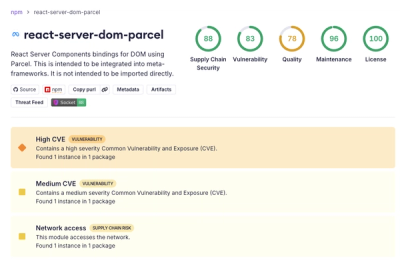Lightweight and fast database access with query builder for MySQL and SQLite databases, as well as a Flatfile database implementation
The single module is trying to simplify the database access for your web application, preventing sql injections, making it easier to move from one database to another, offering a general interface to access the database.
Features
-
Easy to use: With a clear and intuitive API, you can get started quickly.
-
Secure: Using this API significantly reduces the risk of SQL injections
-
Scalable: You can start with the flat file database, move on to SQLite and then to MySQL without having to change your code
Installation
pip install python-data-access
Documentation
Database
Connecting to a database need to be done only once in your application. After that the connection will be found.
SQLite
from easydb import pda
db = pda.Database().db_sq3('/somewhere/dbtest.sqlite')
MySql
from easydb import pda
host='localhost'
database='dbtest'
user='dbuser'
password='dbpassword'
db = pda.Database().db_msq(host, database, user, password)
Flatfile
from easydb import pda
datapath='/somewhere'
db = pda.Database().db_flat(datapath, 'dbtest.flat')
In cases where sqlite and mysql isnt available or you just want to store and retrieve some data, this might be a solution. Data are stored in the os filesystem.
Tables
Open a table
Opens a table and will raise an exception if the table doesnt exist:
products=pda.Table('Products')
Open / create a table
Opens a table and will create it if it doesnt exist:
stmt='CREATE TABLE Products\
(ProductId INTEGER NOT NULL PRIMARY KEY AUTOINCREMENT,\
Description TEXT NOT NULL UNIQUE,\
Price REAL, Min INTEGER,\
Inactive INTEGER)'
products=pda.Table('Products', stmt)
Open / create a table using a model
class Products(pda.Table):
_name: str = 'Products'
def ddl(self):
return pda.DDL(self._name) \
.integer('ProductId', True, True, True) \
.text('Description', 64, True, True) \
.real('Price' ) \
.integer('Min' ) \
.integer('Inactive')
products = Products()
class OrderDetails(pda.Table):
_name: str = 'OrderDetails'
def ddl(self):
return pda.DDL(self._name) \
.integer('OrderId', True) \
.integer('Pos', True) \
.integer('ProductId', True) \
.integer('Qty', True) \
.real('Price' ) \
.text('Description') \
.primary_key('OrderId, Pos') \
.foreign_key('ProductId', 'Products', 'ProductId')
order_details = OrderDetails()
Drop a table
pda.Table('Products').drop()
or
Products().drop()
Insert a row
result = products.insert({'Description':'A Product Description'}, 'Price': 25)
result = order_details.insert({'OrderId': 2, 'Pos': 1, 'ProductId': 1, 'Qty': 10})
Update row(s)
result = products.update(1, {'Min': 500})
result = products.where('Inactive',1).where('Description', 'A%', 'like').updateall({'Min': 0, 'Price': 0})
Delete row(s)
result = products.delete(1)
result = products.where('Inactive',1).deleteall()
Find a row
result = products.find(1)
result = order_details.find({'OrderId':2, 'Pos': 1})
Counting rows
result = products.count()
result = products.where('Price', 100, '<').count()
Selecting rows from a table
result = products.limit(5).findall()
result = products.limit(10).offset(10).findall()
result = products.findfirst()
result = products.where('Inactive', 1).orderby('Description').limit(10).findall()
result = order_details.where('OrderId', '2').findall()
A more complex select
Lets assume, the following statement is stored in file named PRODUCTION.SQL
select
Production.production_date as production_date,
Products.description as description,
Production.quantity as quantity,
Production.details as details,
Production.planned as planned,
Production.produced as produced
from
Production
left join Products on
Production.product_id = Products.product_id
order by
production_date, description
You can load this statement and pass it on:
sql = products.getsql('products.sql')
result = products.limit(10).findall(sql)
result = products.where('Description', 'A%', 'like').findall(sql)
Import and export to csv file
products.import_csv('product_importdata.csv')
products.export_csv('product_exportdata.csv')
Running the Tests
The tests can be run individually i.e.:
python3 -m unittest discover tests test_pda_mysql.py
python3 -m unittest discover tests test_pda_sqlite.py
python3 -m unittest discover tests test_pda_flat.py
Running Benchmark
python3 benchmarks.py -h
usage: benchmarks.py [-h] [-r ROWS]
optional arguments:
-h, --help show this help message and exit
-r ROWS, --rows ROWS set no. of rows to generate and process
The SQLite and Flatfile database will be created in the same folder in "./tests/data/[sqlite.db] and [flat.db]. In order to use Mysql, ypu will need to create a database. (host=localhost, dbname=db_test, dbuser=db_test, dbpass=db_password). If you are going to use something else, you will have to change the following line:
bm = DBBenchmark('MSQ','Benchmarks for MySQL Database', dbname='db_test')
to your individual settings:
bm = DBBenchmark('MSQ','Benchmarks for MySQL Database', host='xxx', dbname='xxx', dbuser='xxx', dbpass='xxx')
The output would be something like this:
Benchmarks for SQLite Database
+ insert 1000 rows in: 0.11565 secs
+ read 1000 rows in: 0.01676 secs
+ select and count rows: 100 counted in 0.00022 secs
+ delete 1000 rows in: 0.01205 secs
Benchmarks for MySQL Database
+ insert 1000 rows in: 0.70933 secs
+ read 1000 rows in: 0.2949 secs
+ select and count rows: 100 counted in 0.00092 secs
+ delete 1000 rows in: 0.22095 secs
Benchmarks for Flatfile Database
+ insert 1000 rows in: 0.37627 secs
+ read 1000 rows in: 0.0407 secs
+ select and count rows: 100 counted in 0.04923 secs
+ delete 1000 rows in: 0.01634 secs



